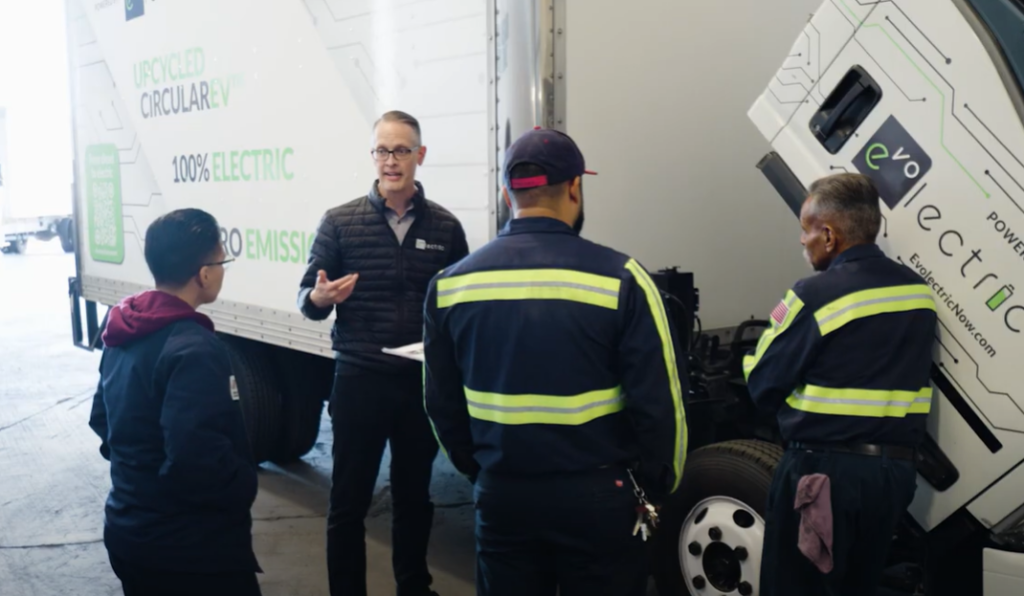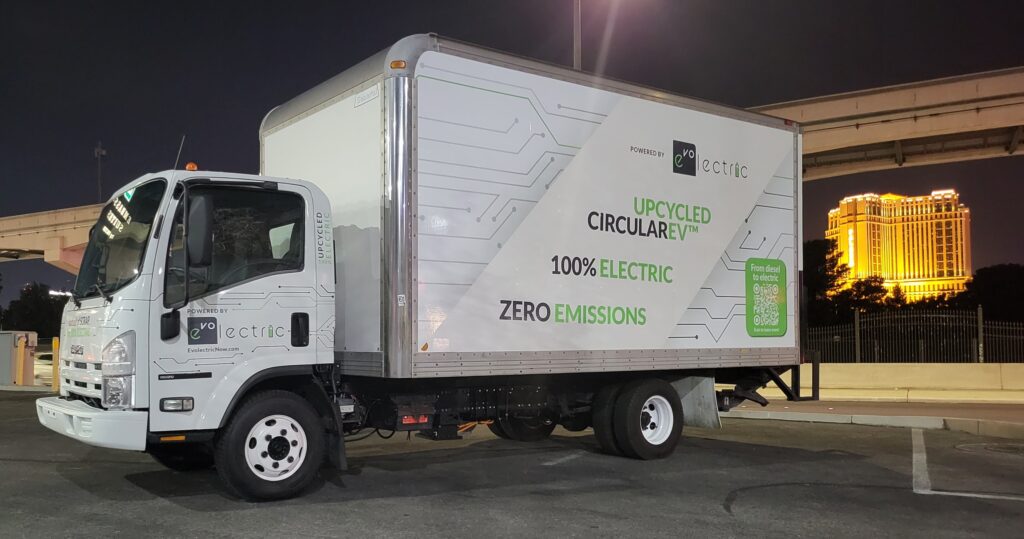Electric vehicles (EVs) are far from a new invention.
Nearly 200 years ago, Slovak-Hungarian inventor and priest Anyos Jedlik built the first experimental electric motor in 1827. A year later, they used it to power a tiny car. From this small prototype, the fledgling technology developed into viable passenger vehicles, eventually reaching a peak in America between 1900 and 1910.
At that time, EVs had captured 38% of the national market, a greater share than gasoline-powered internal combustion engine (ICE) vehicles. The EV was silent, reliable, simple to drive, and easy to start – while the gas-powered car was noisy, unreliable, and difficult to operate.
So how did we end up with a world dominated by gas?
The answers are cost, range, and speed.
In 1912, electric cars were priced between $1,750 and $3,000 (equivalent to between $56,100 and $96,300 in 2023), whereas the basic Ford Model T was $650 (equivalent to $20,900 in 2023). Even the best EV models could only travel at a maximum of 32 kilometers per hour (20 MPH) and a distance of 60 kilometers (37 miles) before needing to be charged again.
Then, highways began connecting North America’s cities. Long-distance journeys became viable, oil prices fell, and technological innovations improved reliability and comfort – meaning ICE vehicles took a front seat for consumers. Eventually, these options pushed any alternatives out of the market altogether.
Today, the obstacles for widespread EV adoption remain similar to those faced in the early 20th century. But the gap is getting smaller. Battery technology is advancing rapidly and costs continue to fall as manufacturer investments and regulatory incentives from world governments push forward innovation. New solutions, such as retrofitting, are coming to the forefront, offering quicker and more cost-effective ways of repurposing ICE vehicles as well as improving existing EVs.

“The world is beginning to move in unison toward this goal,” says Joe Capriotti, senior mechanical engineer at Southern California-based fleet conversion company Evolectric. “A lot of this technology is new and unique, and challenges remain, but as the technology becomes mainstream, the price will continue to fall to reflect that.”
The question is: How can we overcome the challenges for the sake of a healthier world?
The drivers of EV adoption
Some countries have set ambitious targets for overcoming these obstacles and achieving the transition to wider adoption of EVs. The EU, UK and Canada have separately committed to targets for all new light-duty vehicles to be zero-emission by 2035, while Norway is aiming for 2025. Several emerging economies, such as India, Mexico, Turkey, and Morocco, have also committed to supporting this transition as part of the COP26 deceleration on zero-emissions vehicles.
These targets are becoming more obtainable due to a general downward trend in EV prices, driven by an 88% fall in the price of batteries between 2010 and 2021, according to BloombergNEF. However, the rapid increase in EV sales, and the disruption caused by the Russian invasion of Ukraine, have led to soaring prices of crucial raw materials such as lithium, cobalt, and nickel, reversing the downward trend in battery prices.
This has prompted the U.S. Government to award $2.8 billion in grants to 20 manufacturing and processing companies for projects in 12 states. It has also launched the American Battery Materials Initiative, which aims to strengthen the supply of these essential minerals and limit the impact of such disruption in the future. The automotive industry is taking steps to meet these ambitious goals in leading markets, adapting its focus towards providing a wider selection of electric cars. Large manufacturers are responding by creating new designs and adaptations of existing models.
Introducing CircularEV solutions
Advancements are also being made to repurpose existing vehicles, which would otherwise have to be replaced if an owner wanted to move to the more sustainable option of an electric vehicle. One company driving innovation in this area is Southern California-based Evolectric, which specializes in electrified transportation and battery technologies for commercial vehicles with their CircularEV solutions. Using their CircularEV™ software, they are able renew the life of existing vehicles by making them be smart and 100% electric.
“We know that the major players are focusing on delivering new personal vehicles,” says Jakson Alvarez, co-founder at Evolectric. “But there are 340 million commercial vehicles worldwide, 100 million of which are in the U.S. alone. That’s a big challenge when you’re looking to replace them with new vehicles, but a big opportunity when you’re looking to repurpose them.”
Evolectric takes a vehicle, such as a truck, removes the ICE platform while keeping as much of the rest as possible, and then installs its smart electric powertrain technology creating CircularEVs.

“We bring an automotive mindset and methodology into the conversion process, combining circular economy principles with electric vehicle technology,” says Alvarez. “This allows us to carry out conversion in a way that’s repeatable, scalable, affordable, and good quality.” For example, using Dassault Systèmes’ 3DEXPERIENCE platform on the cloud to follow system requirements and validation, a technician could replicate the same process anywhere in the world.
As Capriotti explains, solutions such as Evolectric’s CircularEVs could help lower the barrier for those who may not be able to afford new EVs.
“From a practical perspective, we need both big and small companies to go electric,” he says. “We are creating a solution for some of the smaller players who don’t have the funds required for large investments in brand new fleets. If you’re able to convert what you have, that’s much better than not doing anything.”
There are also practical benefits to converting a commercial vehicle over purchasing a new one.
“A vehicle can be converted much more quickly than is needed to produce a new one, and the process costs 45% less than buying a new EV,” says Alvarez. “We are also able to refurbish the inside of a vehicle, which, along with the new electrical systems, can extend its life by over 10 years or more. By getting a vehicle converted, companies can therefore reduce their impact while keeping their drivers in vehicles they are already familiar with.”

Worldwide growth of electric vehicles
Thanks to lower costs and regulatory pressure coming to bear, EV adoption has been increasing at a growing pace. Just 120,000 electric cars were sold worldwide back in 2012, according to the International Energy Association’s (IEA) Global EV Outlook 2022. Nine years later, more than that were sold every week. This boom in sales tripled the total number of electric cars on the world’s roads between 2018 and 2021, demonstrating the powerful momentum pushing forward EVs.
Norway is the world leader in EV market share, making up 79.3% of vehicles sold in the country in 2022. The Norwegian government has incentivized this growth by providing tax exemptions and lower fares for road tolls and parking, though these benefits have now been limited as the authorities aim to reclaim some of the lost income for the state.
“We are campaigning hard to remind the Norwegian government just how important these incentives are to succeed and continue to show the world that a cold climate and remote infrastructure are no excuse not to go 100% electric,” said Christina Bu, secretary general of the Norwegian EV Association, in response to the announcement of the latest sales figures.
The Norwegian approach, however, does not necessarily offer a solution for the wider world. Norway, whose Sovereign Wealth Fund is among the world’s biggest investors, was able to absorb the loss of income for many years to promote growth in electric car sales.
Of the 6.6 million EVs sold in 2021, 3.3 million were sold in China. Sales in Europe reached 2.3 million, while 630,000 EVs were sold in the United States. This means that just 370,000 EVs were sold in the rest of the world combined. Less than 0.5% of car sales in Brazil, India and Indonesia are electric, indicating there are significant obstacles for EVs to overcome in large parts of the world.
Evolectric’s Capriotti is optimistic that these challenges will be met by the industry and that EVs are the solution for the future.
“I think the writing is on the wall,” he says. “There are too many advantages to turn back. Yes, there are pain points, but the industry as a whole is working together on solving them. Battery cell technology is being innovated upon almost daily. And while those developments will take some time to become a reality, it will happen. I have no reason to believe we won’t overcome the challenges.”
Learn more about how Dassault Systemes’ solutions are helping the next generation of mobility.

